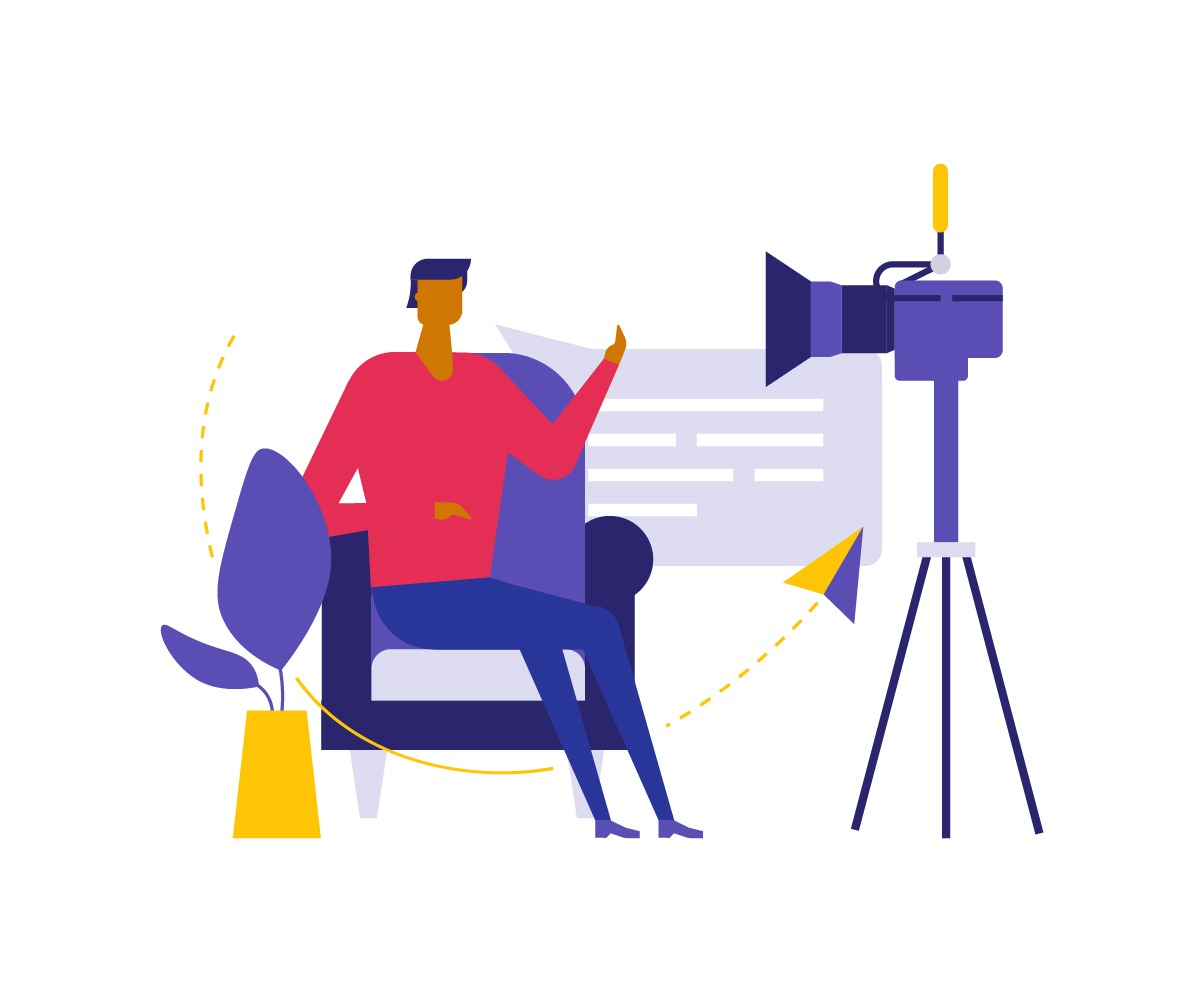“Argh, no thank you, don’t point that camera at me!”
Have you ever caught yourself saying something along those lines?
Or scurrying for cover when the marketing manager starts stalking the office looking for team photos or someone to say a few words for the company video channel?
Then you’re not alone. I don’t like being photographed and I don’t like making videos much either – although people who know me via LinkedIn might be surprised to hear it.
I’ve been putting up videos regularly for a few months now and, while they’re hardly BAFTA material, they’ve led to some interesting connections and conversations.
Talking on camera doesn’t come naturally to me, it’s something I’ve had to force myself to learn to do.
I put myself through that ordeal because I know it’s important.
Video is a vital part of the digital marketing mix these days and there’s almost something suspicious about professional advisers who don’t or won’t do it.
The fact is, people like to see people and they like to hear the voices of those in whom they’re considering placing their trust. It’s human nature.
And if you want to be inclusive – if you want to reach everyone rather than just people who share your communication preferences – then you need to get out of your comfort zone.
Trust me, it gets easier
If you’d told me a couple of years ago that I’d be comfortable recording a video in the corner of the office within earshot of my colleagues, then posting it to a public forum, I’d have laughed in your face.
The first videos I recorded were extremely muted, stilted and awkward. I felt self-conscious and was unable to relax and be myself.
One thing that really helped was spending time working with the team at Floating Harbour, a video production studio here in Bristol. Richard da Costa, the firm’s founder, directed me in a couple of filming sessions and gave great advice with great sensitivity. “Slow down!” was one important note. Another was to keep up the energy, rather than tailing off towards the end of sentences and sections.
More importantly, though, he was encouraging, making me feel as if, even though I wasn’t enjoying the experience, it might not look quite as bad to an audience as it felt to me.
Since then, I’ve tried a range of different approaches, from a full-on camera setup with lights and microphones to arms-length smartphone videos captured quickly at my desk.
I’ve also experimented with text and voiceover but, let’s be honest, that’s me retreating to the cosy embrace of words.
Video tips and tricks
The advice that follows is about overcoming the anxiety of filming rather than the practicalities. For that, check out our ‘Beginner’s guide to video for accountants’.
First, there’s a trick I use all the time: think about your audience and speak with a specific, enthusiastic person in mind.
It’s so easy to find yourself thinking of peers or critics – people who know as much as you, or more.
Your fellow accountants might not be impressed by a 60-second guide to allowable expenses. They might even pick holes in the exact way you’ve expressed yourself – “Uh, technically, I think you’ll find…”
But you’re not speaking to them. You’re speaking to your favourite client – the one who is always asking questions, listens to the answers and really appreciates what you do.
Secondly, pick a topic you know and love. The better you know your subject, the more confident you’ll be improvising around it. And your passion will come across as energy.
By the same token, if it’s a subject you’re blagging your way through, it’s more likely you’ll feel and look anxious.
Thirdly, don’t look at yourself. If you’re using a smartphone in selfie mode, or have a camera attached to a monitor, it can be tempting to let your eyes drift to your own performance and before you know it, you’re obsessing over whether your shirt looks as if it needs ironing rather than focusing on speaking naturally.
There’s another good reason to avoid admiring yourself, too: when you look at the screen rather than into the lens, you look really odd in the finished video. People expect the illusion of eye contact.
Finally, make yourself comfortable. If lockdown and enforced home working has been good for one thing it’s been giving me the freedom to practice recording videos in my own space, in my own time.
Make sure everyone in the house or office knows you’re recording. Have a glass of water or fruit tea handy, to prevent a case of the croaks. Remove any distractions – mute your phone, turn off email notifications. Relax.
Once you’ve become a polished, practiced performer, you’ll be better equipped to record whenever, wherever.
Sharing your first video
Once you’ve made a video you don’t totally hate (let’s not be too ambitious the first time out) you need to share it.
I’d say LinkedIn is a good place to debut. Lots of people use video there so it will probably fit in. It’s also a place designed for self-promotion and which rewards people who put themselves out there.
There are trolls but, in my experience, not many and the chances are, if you get any engagement at all, it will be positive.
I’d also suggest resisting the urge to be self-deprecating. People often say things like “This is my first video, be kind” or “Here’s a dumb thing I made”.
When you do that, you’re inviting people not to take you seriously.
If you’ve overcome your anxiety to make a video, you’ve managed more than many people ever do. Be proud of yourself and remember, you’re an expert in what you do – people want your advice and they’re interested to hear your opinion.
Download our ‘Beginner’s guide to video for accountants‘ to find out more on why video can be a powerful communications medium, and one that’s easier than ever for accountants to explore for their practice.
Contact us today if you’d like us to help you start building video into your accountancy firm’s digital marketing programme.




